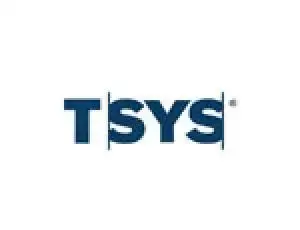
Get a Quote
Get a Quote and Find Services to Fit Your Needs 50000+ Satisfied Clients
5000+ Licenses & Registration
15 Branches across India
75 Years + Combined experience
If you're filing your income tax return, it's important to stay informed about the latest compliance requirements to avoid penalties and make the most of new provisions. Need help? Connect with Registrationwala for accurate and stress-free Income Tax Return filing in a timely manner.
Satisfied Clients
Services
Years Combined Experience
Get Started!

























In India, individuals and businesses must file income tax returns as part of managing their tax obligations. For income exceeding the basic exemption limit, ITR filing is mandatory for taxpayers to ensure compliance with Indian tax regulations. Keep reading to find out who needs to file ITR, due date for ITR filing for different category taxpayers and learn about the tax filing process.
ITR Filing full form is Income Tax Return Filing. ITR filing means the process of submitting your Income Tax Return (formal declaration) to the Income Tax Department (ITD) to declare your income, expenses, deductions, and taxes paid for a specific financial year.
There are different types of taxpayers who need to file ITR. These taxpayers are as follows:
Individual (Residents & Non-Residents)
Hindu Undivided Family
Firms
Companies
Association of Persons (AOP)
Body of Individuals (BOI)
Local Authority
Artificial Judicial Person
In India, individuals are required to file ITR under certain conditions. The most common reason is when a person’s gross total income surpasses the basic exemption limit, which varies by age:
Below 60 years: Rs 2.5 lakh
Between 60 and 80 years: Rs 3.0 lakh
Above 80 years: Rs 5.0 lakh
Even if your income falls below these thresholds, you may still be required to file ITR under specific situations, such as:
If you have deposited Rs 1 crore or more in one or more current accounts.
If you’ve deposited Rs 50 lakh or more into one or more savings accounts.
If your expenditure on foreign travel exceeds Rs 2 lakh.
If your annual electricity bill is more than Rs 1 lakh.
If the total TDS (Tax Deducted at Source) or TCS (Tax Collected at Source) exceeds Rs 25,000 or Rs 50,000 in the case of senior citizens.
There are various types of ITR forms for Income Tax Return in India. The exact form for filing ITR depends on the type of taxpayer and the nature of income. Here are the commonly used ITR forms in India along with the due dates for filing them:
|
Form Name |
Purpose |
Due Date (AY 2025–26) |
|
ITR-1 (Sahaj) |
Salaried individuals |
15th September 2025 |
|
ITR-2 |
Capital gains, HNIs |
15th September 2025 |
|
ITR-3 |
Business/professionals |
15th September 2025 (no audit) / 31st Oct 2025 (audit) |
|
ITR-4 (Sugam) |
Presumptive income |
15th September 2025 |
|
ITR-5 |
Firms, LLPs |
15th September 2025 (no audit) / 31st Oct 2025 (audit) |
|
ITR-6 |
Companies (non-exempt) |
31st Oct 2025 |
|
ITR-7 |
Trusts, charitable orgs |
31st Oct 2025 |
|
ITR - U |
Updated return (for previously filed or missed returns) |
Up to 31st March 2030 |
Note: In the Union Budget 2025, Finance Minister Nirmala Sitharaman extended the time frame for taxpayers to submit updated ITR from the existing 2 years to 4 years from the end of the relevant assessment year.
The Income Tax Slabs in India for FY 2024-2025 (AY 2025-26) are as follows:
|
Income Slabs (in Rs.) |
Income Tax Rates (in %) |
|
Up to Rs. 3 lakh |
NIL |
|
Rs. 3 lakh - Rs. 7 lakh |
5% |
|
Rs. 7 lakh - Rs.10 lakh |
10% |
|
Rs. 10 lakh - Rs.12 lakh |
15% |
|
Rs.12 lakh - Rs.15 lakh |
20% |
|
Above Rs.15 lakh |
30% |
Note: It is important to note the following:
If your total income is up to Rs 7,00,000, you won’t have to pay any income tax under the new tax regime, thanks to a rebate of up to Rs 25,000. (This benefit isn't available to NRIs.)
For salaried individuals, a standard deduction of Rs 75,000 is now available under the new regime, helping reduce taxable income.
The employer's contribution to the National Pension System (NPS) is eligible for deduction, up to 14% of the salary for FY 2024–25.
For those receiving a family pension, the maximum deduction has been increased from Rs 15,000 to Rs 25,000. This is a welcome relief for pensioners.
Thanks to these changes, a salaried employee under the new tax regime could save up to Rs 17,500 in taxes.
Also, keep in mind that the new regime is now the default. If you prefer to stick with the old regime, you’ll need to submit Form 10-IEA.
Lastly, the highest surcharge rate under the new regime is capped at 25%, compared to 37% under the old regime. This makes the new regime potentially more favorable for high-income earners.
The Income Slabs for FY 2025-2026 (AY 2026-27) are as follows:
|
Income Slabs (in Rs.) |
Income Tax Rates (in %) |
|
Upto Rs.4 lakh |
NIL |
|
Rs. 4 lakh - Rs.8 lakh |
5% |
|
Rs.8 lakh - Rs.12 lakh |
10% |
|
Rs.12 lakh - Rs.16 lakh |
15% |
|
Rs.16 lakh - Rs.20 lakh |
20% |
|
Rs.20 lakh - Rs.24 lakh |
25% |
|
Above Rs.24 lakh |
30% |
Note: Under the revised tax regime, individuals with an income of up to Rs 12,00,000 won’t have to pay any tax as a result of increased rebate of Rs 60,000. For salaried individuals, the tax liability becomes zero for incomes up to Rs 12,75,000, as they also benefit from a standard deduction of Rs 75,000.
In budget 2024, no changes were made to the tax slabs under the old regime. The table below shows the tax slabs under the old regime:
|
Income Slabs (In Rs.) |
Age below 60 years & NRIs (in %) |
Age between 60 Years to 80 years Resident Individuals (in %) |
Age above 80 Years Resident Individuals (in %) |
|
Up to Rs.2.5 lakh |
NIL |
NIL |
NIL |
|
Rs.2.5 lakh - Rs.3 lakh |
5% |
NIL |
NIL |
|
Rs.3 lakh - Rs.5 lakh |
5% |
5% |
NIL |
|
Rs.5 lakh - Rs.10 lakh |
20% |
20% |
20% |
|
Rs.10 lakh and above |
30% |
30% |
30% |
Note: Applicable surcharge and health & education cess will still be levied as per the income tax’s provisions.
Table below explains how old vs new tax regime slabs differ for FY 2024-25 (AY 2025-26):
|
Tax Slabs (in Rs.) |
Old Tax Regime Rates (in %) |
New Tax Regime Rates (in %) |
|
Up to Rs.2.5 lakh |
NIL |
NIL |
|
Rs.2.5 lakh - Rs.3 lakh |
5% |
NIL |
|
Rs.3 lakh - Rs.5 lakh |
5% |
5% |
|
Rs.5 lakh - Rs.6 lakh |
20% |
5% |
|
Rs.6 lakh - Rs.7 lakh |
20% |
5% |
|
Rs.7 lakh - Rs.9 lakh |
20% |
10% |
|
Rs.9 lakh - Rs.10 lakh |
20% |
10% |
|
Rs.10 lakh - Rs.12 lakh |
30% |
15% |
|
Rs.12 lakh - Rs.15 lakh |
30% |
20% |
|
Rs.15 lakh and above |
30% |
30% |
It must be understood that not all income is taxable under the slab system. Taxable income from capital gains is an exception to this rule. The taxability of capital gains depends on the type of asset you own and the duration for which you hold it.
The holding period can be either short-term or long-term, and it determines the nature of the asset, which may differ across asset classes.
The table below shows when an individual can choose between the old vs new tax regimes based on their source of income.:
|
Scenario |
Time of Selection of Option (Old vs New Regime)
|
|
Income from Salary or any other head of income attracting TDS |
|
|
Income from Business & Profession |
|
For filing ITR, the following documents are necessary:
PAN card
Aadhaar card
Bank Statement/Passbook
Home Loan Statement
Capital Gains Details
Rental Income Details
Foreign Income
Dividend Income
Interest Certificate
Form-16 Part A and B for salaried individuals
Form 26AS (consolidated Annual Information Statement for a particular FY)
Other documents requested by ITD.
The process for filing ITR involves several steps. The key steps to file Income Tax Return online are explained herein:
The first and foremost step to file ITR online is to gather all the necessary documents like Form 16 (provided by the employer), salary slips, Form 26AS (which reflects the taxes already paid), bank statements, and interest certificates.
Additionally, you require proof of any deductions/exemptions you want to claim (like investments under Section 80C or health insurance premiums under Section 80D). When you have all the documents in place, the ITR process becomes quicker and also the chances of missing out on eligible tax benefits are reduced to a great extent.
Now, the next step is to determine which ITR form you require for filing. The form you select depends on several factors like your source of income (salary/business/capital gains/etc), residential status, and whether you are filing as an individual, HUF or some other category.
A salaried individual, for example, typically uses ITR-1 for filing their ITR. Those with capital gains or multiple income sources may have to file ITR-2 or ITR-3 form. In order to avoid issues with processing, it is important that you choose the right form.
You must log onto the official income tax e-filing portal to file your return online. You must use PAN, password and fill in captcha for logging in. After you log in, you need to locate the e-file section and select the ITR option, and select relevant assessment year and online mode.
Once you choose the correct form, you must enter all the necessary information like your income, deductions, etc. Before you submit the return, you have to carefully review everything. Once you file the return, you must verify it as a mandatory final step.
Once you successfully submit your return on ITR Filing Portal, you need to complete the process by e-verifying it. You can do this electronically through Aadhaar OTP, or other options available. Income Tax Return E-verification is mandatory as it confirms your return’s authenticity.
In case you are not able to e-verify, you can send a signed physical copy of the ITR-V to the Centralized Processing Centre in Bengaluru within 30 days of filing the return.
The changes in new tax regimes are many such as higher tax rebate limits, and streamlined tax slabs. Individuals with lower earnings and investments will result in fewer deductions and exemptions with new income tax laws.
Registrationwala provides Income Tax Services in India. Our team helps individuals to file an ITR and assist them with ways to save tax by applying for required deductions and exemptions. Reach out to us to know the best possible ways to save tax from the start of the financial year.
Q1. Do I need to file ITR if my income is below the taxable limit?
A. Yes, you can file an ITR even if you have no taxable income. This is known as a NIL ITR. It can serve as proof of income for purposes like visa applications, loan approvals, or other credit-related needs. Additionally, if tax has been deducted from your income even though it falls below the taxable limit, filing an ITR is necessary to claim a refund.
Q2. Is it necessary to show income from other sources in ITR?
A.Yes, you must disclose the taxable income from all sources while filing an ITR. Even the exempt income must be shown, similarly, it can be shown under the Schedule EI.
Q3. Should I e-verify to get the IT refund?
A. Electronic verification is important to complete the process of Income Tax ITR filing. One should e-verify the ITR within the stipulated time. Non-verified ITR will be treated as invalid. There are multiple ways to e-verify ITR such as Aadhaar OTP, Bank ATM, Electronic Verification Code, and net banking.
Q4. Who needs to file ITR online?
A. If an individual’s total income exceeds the basic exemption limit or meets specified conditions set forth by the ITD, they need to file ITR online.
Q5. How to file ITR online?
A. You can e-file Income Tax Return online by visiting the Income Tax e-filing portal.
Q6. What is the last date to file Income Tax Return?
A. For 2024-25 (Assessment Year 2025-26), the last date to file ITR is 15 September 2025.
Q7. Who is liable to pay Income Tax of India?
A. Any individual, Hindu Undivided Family (HUF), company registered under Companies Act 2013, Partnership firm (Partnership Act 1932), Limited Liability Partnership (LLP Act 2008), Association of Persons (AOP), or Body of Individuals (BOI) earning income in India has to pay tax on their income, subject to the exemption limits prescribed by the Government of India.
Q8. Can I file my Income Tax Return with Form 16 online?
A. Yes, you can file your ITR with Form 16 on the ITD’s e-filing portal.
Q9. What are the benefits of filing income tax return?
A.The benefits of filing ITR are: (i) it serves as proof of income, (ii) helps in smooth processing of loans and visas, (iii) enables refund claims, (iv) allows carry forward of losses, (v) and ensures compliance with tax regulations.

★ ★ ★ ★ ★
I very much appreciate the fact that you guys possess tremendous knowhow of private limited company incorporation. You have exhibited professional and respectful manner towards my query and I would seriously recommend you guys to all the folks looking for outstanding business services.

★ ★ ★ ★ ★
Thanks to their support, I got my trademark successfully. I highly recommend their services for anyone needing help with their intellectual property. The person assigned to me was very cooperative and helpful.

★ ★ ★ ★ ★
Thanks to their support ragistrationwala team, I got my IP-1 license successfully and special thanks to Miss.Kanishka for your great and timing support !!!!!! I have archived my goal one step forward... Thanks for the entire team....

★ ★ ★ ★ ★
Really helped a lot in getting my both VNO licenses. Great experience working with the team and very humble team, thanks for providing the vno license on time.

★ ★ ★ ★ ★
I had a good time working with Registrationwala. Good team. I would recommend their services to others.

★ ★ ★ ★ ★
It was extremely great service of Registrationwala consulting firm, and this firm is providing the best services and worry about the client's required services along the client's satisfaction.

★ ★ ★ ★ ★
Superb Experince! Within no time the trademark registration was on.Highly professional team. I am very much Impressed with the prompt response and efficiency.Thank you.

★ ★ ★ ★ ★
We had taken ISP license from registration wala and the supporting person is very helpful to taken that license his communication and his work is satisfactory and thanks for those services

★ ★ ★ ★ ★
I sincerely appreciate your prompt support in helping me get the access license so quickly. Your professionalism and efficiency are truly commendable. Thank you for going above and beyond to assist me. Keep up the great work!